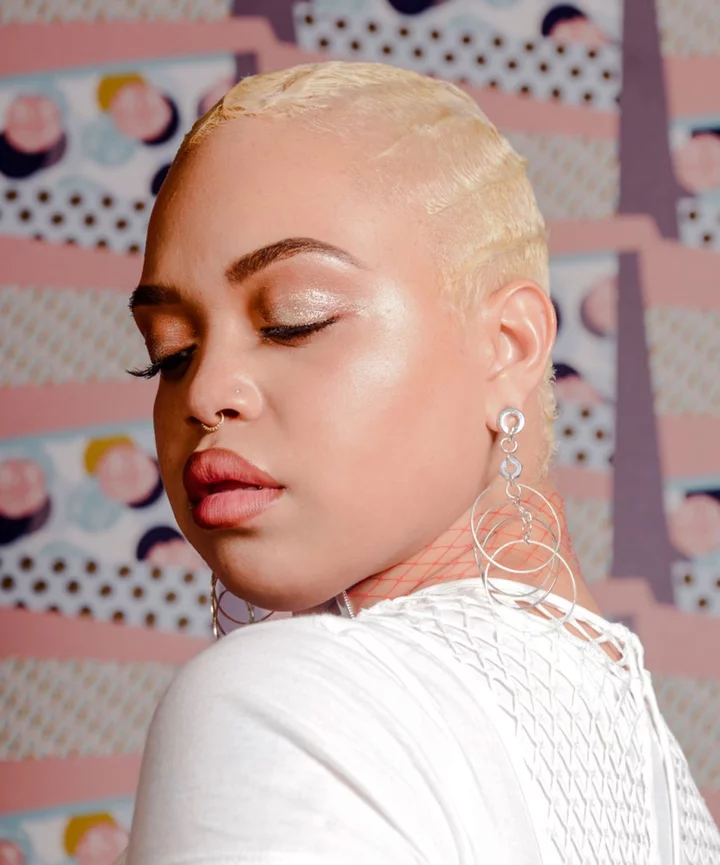Just like the way our wardrobes cycle through trends with the months that pass, so too do allergies. As the year rolls on, some of us are still constantly sneezing and fighting the urge to rub our itchy, bloodshot eyes with the changing of the seasons. This reality is something that the roughly 50 million allergy sufferers in the U.S. alone know all too well. Some of them may also have noticed that, in addition to becoming someone that should probably start buying tissues wholesale, allergies can dramatically impact your skin.
The defining feature of “allergy face” is puffiness (think: the swelling you’d wake up to after a night of drinking too much red wine), accompanied by a nose that’s in a never-ending state of chafe. It’s not ideal — and unfortunately, it has the potential to get worse. “Pollen can travel for up to 50 miles,” says allergist Tania Elliott, MD, chief medical officer of virtual vare at Ascension. “Now, with global warming, we’re seeing ‘super pollen’ that is a lot more buoyant — meaning it travels even further.”
Since your skin is the first line of defense against environmental aggressors, it’s on high alert during the season, so you’re more likely to get rashes or irritation from products or ingredients that may not normally cause a reaction. “Aside from these local reactions, people also get systemic reactions where your immune system responds, producing many inflammatory factors that cause your skin cells to react,” says Robb Akridge, PhD, the founder and CEO of Opulus Beauty Labs.
However, that doesn’t mean you’re destined for months of itchy skin and puffy eyes. Adopting a few of these doctor-recommended, allergy sufferer-approved strategies is a good start. The more you know, the sooner you can save yourself from the negative effects.
Dark Circles
When seasonal allergies come on, under-eye swelling is likely to follow. “Allergies trigger mast cells, which release histamine — the culprit behind all that itching — that causes the blood vessels to swell,” says dermatologist Michelle Henry, MD. “These engorged vessels cause puffiness and dark circles.”
Prevent it by taking an over-the-counter antihistamine (read the label and safety information before you do, and always contact your doctor if you have any questions). Alternatively, pop some caffeinated eye gels under your eyes to reduce inflammation. Then, sleep on an extra pillow at night to keep the blood from pooling around your eyes.
Rashes
The most common external reaction to stem from allergies is contact dermatitis, which manifests as red, itchy, scaly rashes when a product comes in contact with your skin. Your best bet? “Avoid wearing hairspray, which can make your hair sticky for pollen,” Dr. Elliott says. Steer clear of fragrances and essential oils, too, and give your skin a rest from any chemical exfoliants or other strong, sensitizing acids.
You’ll also want to reach for soothing moisturizers. “They are less reactive with your skin and form a barrier between your skin and the pollen and other environmental elements,” Dr. Robb says. Dermatologist Shari Marchbein, MD, says to look for hydrating ingredients such as glycerin, ceramides and hyaluronic acid, which hold moisture in (she recommends the CeraVe Moisturizing Cream). See your dermatologist if a reaction occurs — you may need a prescription topical cream.
Red, Inflamed Nose
When you’ve blown your nose one too many times, you’ll find instant relief from occlusive moisturizers, which form a film on the skin to keep pollen and allergens out. Aquaphor Healing Ointment is a time-tested go-to, and Dr. Marchbein says you can also use Vaseline Petroleum Jelly or Vanicream Moistruizing Skin Cream. To tone down any redness, try using a green-tinted primer or color corrector on the affected areas before applying the rest of your makeup.
Also recommended: air purifiers. “They’re helpful for the allergens that are suspended in the air, like pollen and pet dander,” says Dr. Elliott, adding that you should keep in mind they won’t work as well for dust mite allergies.
Puffy Face
A puffy face is too real. Whether it’s caused by sinus pressure or airborne allergens, you want to tackle the inflammation head-on. First, you’ll want to cool the skin and get flares under control as soon as possible. You can do a DIY cold press, or reach for products with redness-reducing ingredients like aloe vera or oat extracts.
“I advise my patients to avoid inflammatory foods,” says Jeanine Downie, MD, founder of Image Dermatology. “That means no soy or nuts — a Paleo diet can be helpful in calming rosacea.”
Bloodshot Eyes
While red eyes seem inevitable during allergy season, there are ways to effectively manage them. “Believe it or not, steroid nasal sprays are just as effective for eye symptoms as eye drops,” says Dr. Elliott. “Avoid eye drops that treat red-eye — they contain vasoconstrictors that shrink blood vessels. Your body can get so used to them with regular use that you can have rebound red eyes when you stop using it. Antihistamine eye drops and saline eye drops to flush out your eyes are your best bet.”
But don’t underestimate the power of prevention. Wear sunglasses to protect your eyes from pollen, gently rinse the eyelid area with baby shampoo after being outside to keep allergens from getting stuck, and wear your waterproof mascara loud and proud. At the end of the day, being prepared and planning ahead is the best thing you can do to keep the effects of “allergy face” at bay this season.
At Refinery29, we’re here to help you navigate this overwhelming world of stuff. All of our market picks are independently selected and curated by the editorial team. All product details reflect the price and availability at the time of publication. If you buy or click on something we link to on our site, Refinery29 may earn commission.









